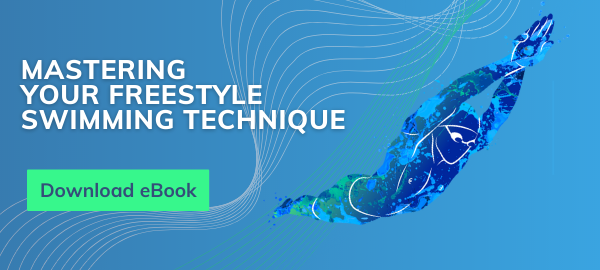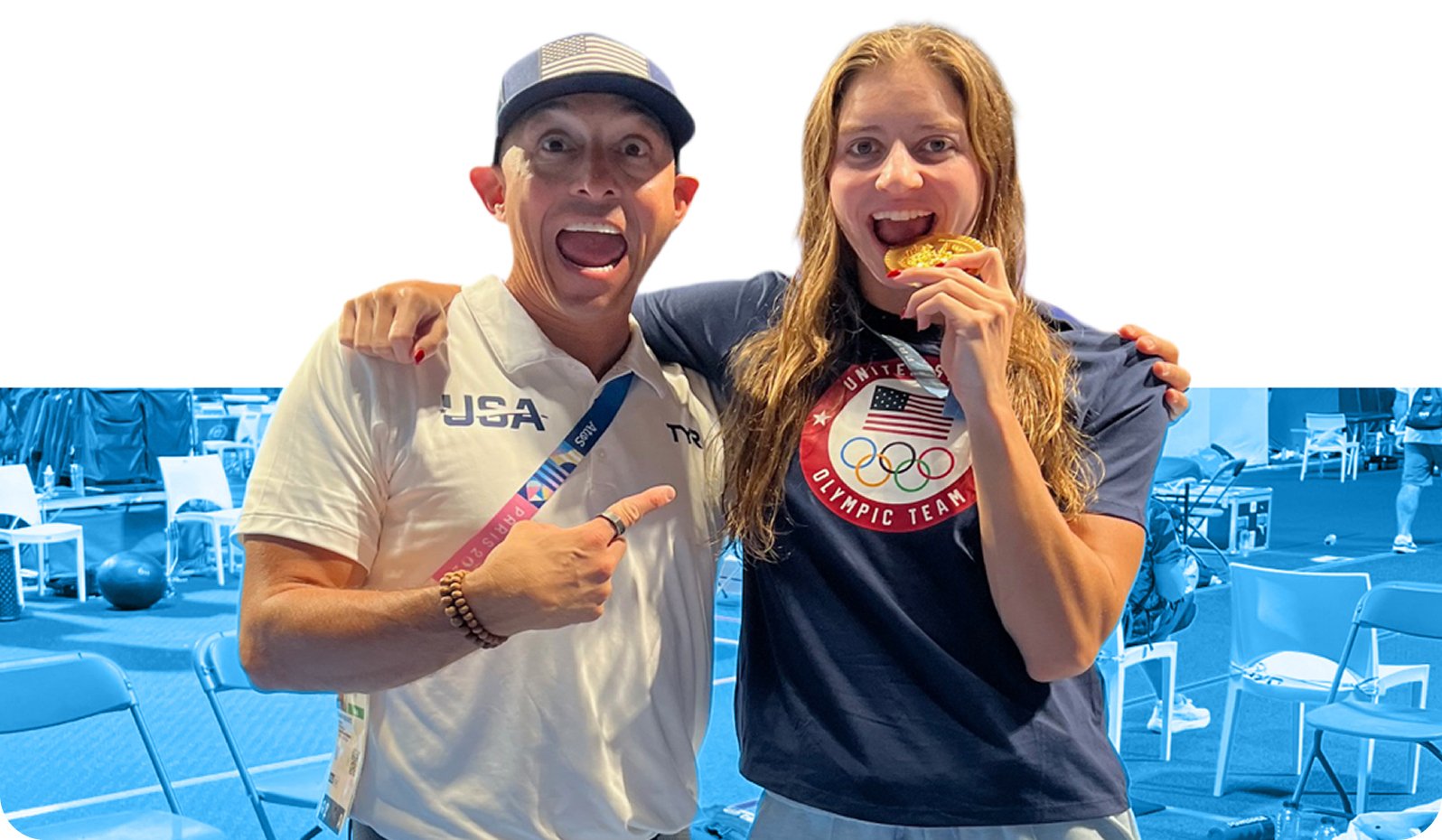In most sports, breathing isn’t a big deal, just open your mouth and take a breath. With swimming however, things are a bit more complex – especially when it comes to swimming freestyle. Swimming is one of the very few spots that requires you to practice and perfect when you take a breath, how often you take a breath, which side you take a breath on and for how long you take your breaths for. In this article we are going to focus on the bilateral breathing pattern in freestyle swimming, because through breathing bilateral you will become a faster and stronger swimmer.
What is a bilateral breathing pattern?
A bilateral breathing pattern simply means breathing to both sides while swimming freestyle. The most common bilateral breathing patterns for freestyle swimmers are to either take a breath every three or five strokes. Breathing every three strokes would mean you would first take a breath on one side, then keep your head in the water for two strokes before breathing to your other side. However, the main point of bilateral breathing patterns is less about if you are taking a breath every 3, 5 or 7 etc. strokes, but more about developing the ability to take breaths on both sides and balancing out your entire freestyle stroke.
Several studies of high-level swimmers have shown that the way you breath while swimming freestyle has major effects on both your freestyle technique, as well as the speed at which you move through the water. The best and most efficient way to swim freestyle is without taking a breath at all because every breath breaks your rhythm a bit. But that doesn’t work for anything longer than a 50-meter race. Because long term breath restriction while swimming leads to an oxygen deficit and respiratory stress which will lessen your ability to perform and leave you gasping for air after your race.
Therefore, for anything longer than a 50-meter race and for all your training sessions, we recommend a bilateral breathing pattern. Often swimmers avoid breathing bilaterally because after swimming with a two-stroke breathing pattern for many years the switch to a bilateral breathing pattern can be very difficult. If you aren’t used to breathing to both sides, the bilateral breathing pattern can completely throw off your rhythm in the beginning. But there are several reasons why a bilateral breathing pattern is so important and ultimately makes you a faster freestyler.
Why bilateral breathing is so important for freestyle swimmers?
1. It balances your stroke
Breathing to only one side for a prolonged period will foster unbalanced muscle growth. You will start to develop a dominant side and a weak side. This in return makes you vulnerable to injuries on your weak arm. By breathing to both sides, you will balance out your stroke by strengthening both sides of your body at the same rate. Having a balanced stroke will give you more power and forward thrust while swimming and therefore make you a faster freestyler.
2. Increased breath control
If you are used to breathing every two strokes, there is no way to get in more oxygen when you are swimming a race. But if you are used to bilateral breathing and start your race with a bilateral breathing pattern, you can always switch to a two-stroke breathing pattern towards the end of the race when you are starting to feel respiratory stress and fill your lungs with more air. Ultimately, breathing bilaterally enables you to better control your oxygen intake and helps you perform better with less. So when it comes to racing or race pace training, you will be able to handle oxygen shortage much better than by breathing every two strokes.
3. Bilateral breathing keeps you in line
If you consistently breath to one side, you tend to swim towards one side instead of swimming in a straight line – especially if you are new to swimming. Because you develop a weaker side, which is pulling not as strong as your strong side, you may often end up swimming against the lane line. Avoid this by forcing yourself to take on bilateral breathing.
4. Enjoy a full rotation on both sides
If you are breathing to both sides, you will learn to rotate to both sides. If you only breath to one side, you will rotate less to the side you are not breathing to, your shoulders will rotate less in general and therefore you miss out on extra power for your stroke. By implementing a bilateral breathing pattern, you will learn to rotate to both sides and again balance out your stroke and maximize your forward thrust and efficiency.
What are the best Tips for balanced stroke?
Tip #1 – Swim single-arm Freestyle
If bilateral breathing is really hard for you because one side is much weaker than your other side, we recommend starting out with this drill. Swim freestyle with one arm only, the other arm placed on your side. Whenever you need to take a breath, rotate and roll your head to the (weaker) side and take a breath. This can be a quite challenging drill in the beginning, however, it’s a great drill to learn how to breathe comfortably on your weak side.
Tip #2 – Use a snorkel
If you feel like you already have an unbalanced stroke, try to implement a snorkel into your daily training. If you are doing longer sets, swim with a snorkel and pay close attention to your pull on both sides and make sure its equal. With a snorkel you don’t have to turn your head and you will get a much better sense of how you rotate (or don’t rotate).
Tip #3 – Start small, aim big
Swimming with a two-stroke breathing pattern is a habit. Swimming with a bilateral breathing pattern may be completely new for you and you need to make it a habit and override your old habit. This takes time, sometimes a lot of time, depending on how long you have been swimming with a two-stroke breathing pattern. Start by using a bilateral breathing pattern during warmup and cooldown, once you feel more confident, start implementing it into more and more parts of your training. Don’t rush it, because you will not be able to take on a new habit from one day to the next. Aim to increase the percentage of bilateral breathing in your workout every week or so.
Tip #4 – Breath every 3, 5, 7, 9….
Bilateral breathing is not limited to breathing every 3 strokes. Once you feel confident with your bilateral breathing pattern, further improve your stroke and your performance with less oxygen by breathing every 5, 7 or even 9 strokes during your training sessions.
If you continue to struggle with a bilateral breathing pattern after months or maybe even years of practice – don’t worry. Many swimmers (even high-level swimmers) are facing the same problem. It takes a lot of time and determination to change old habits and take on new habits. Bilateral breathing can and will make you a faster and more efficient freestyle swimmer – it’s worth the hard work you might have to put in to get used to it.
Now it’s time for you to take the guesswork out of swimming faster! Make a plan towards your goal of a bilateral breathing pattern and implement these tips into your training sessions. To measure your improvements, we recommend training with the all-new TritonWear device. The wearable device tucks under your cap and records your workout as you swim. You remain focused on training and improve your freestyle stroke while TritonWear captures the intel you need to swim faster. To learn more about how TritonWear shows swimmers their strengths and weaknesses based on data collected while you are swimming click here.



.png)


.png)